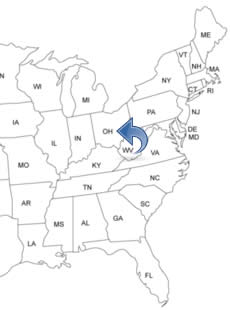OHIO PEOPLE SEARCH!
- ✔ Contact Info
- ✔ Phone Numbers
- ✔ Criminal Records
- ✔ Income Info
- ✔ Neighbors
- ✔ People's Age
- ✔ Property Ownership
- ✔ And Much More
Columbus, Ohio
Columbus is located in the central part and is the capital and the largest city in the U.S. State of Ohio. The Discovery City. Arch City. Columbus is ranked as one of the best places in the country to raise a family and in the top 10 best place to do business in and to live in. The city is the home of many renowned performing arts institutions and is the home of two public colleges. Columbus has a relatively stable economy and the city is home to a couple of corporations named on the U.S. Fortune 500 list.
To See And To Do In Columbus
- Santa Maria, Christopher Columbus Flagship
- COSI Museum
- Ohio Historical Center
- Franklin Park Conservatory
- Columbus Museum Of Art
- Columbus Zoo And Aquarium
- Columbus Symphony Orchestra
- Jack Nicklaus Museum
- Goodale Park
- Wexner Center For The Arts
- Wyandotte Winery
- Ohio Craft Museum
- LeVeque Tower
- Ohio Statehouse
- Kelton House Museum And Garden
History Of Columbus - Timeline
In 1650, French explorers and mapmakers began to make the first vague reports about the region. In 1797, Franklinton was established and it was the birthplace of Columbus. The settlers built a jail, a courthouse, brick houses, and a brick church.
In 1800, about hundred people lived in town. In 1812, Columbus was founded and the city was named for explorer Christopher Columbus. In 1816, Columbus was incorporated and named state capitol.
In 1820, the land prices had dropped and many people had abandoned their property and left town because of the diseases in the town and poverty. In 1831, the Ohio and Erie Canal opened which was connected to Columbus. Many Irish and German settler came to Columbus because of the cheap land.
In 1834, about 3500 people lived in Columbus and Columbus was officially chartered as a city. In 1841, the first sewer in Columbus was constructed. In 1844, Columbus got its first gas-powered streetlights. In 1849, the Bavarian Brewery started. In 1850, the railroad came to the city and in 1851, the first station was built.
In 1861, Camp Chase was established. Union soldiers were trained there but after they left to fight in the Civil War, the camp was turned into a prison that housed 1000s of Confederate Soldiers captured during the war. In 1863, a horse-powered streetcar line was established. In 1868, the Columbus Division of Police was formed. In 1873, the Columbus Metropolitan Library opened. In 1888, the first electric-powered streetcar ran in the city.
In 1900, there were over 125,000 people living in the city. In 1913, a major flood devastated the city and over 90 people died and thousands of people became homeless. In 1927, the LeVeque Tower was built. In 1929, the Port Columbus International Airport opened on a site originally selected by Charles Lindbergh. In 1934, the Columbus City Hall was completed. In 1977, the National City Bank building was constructed.

